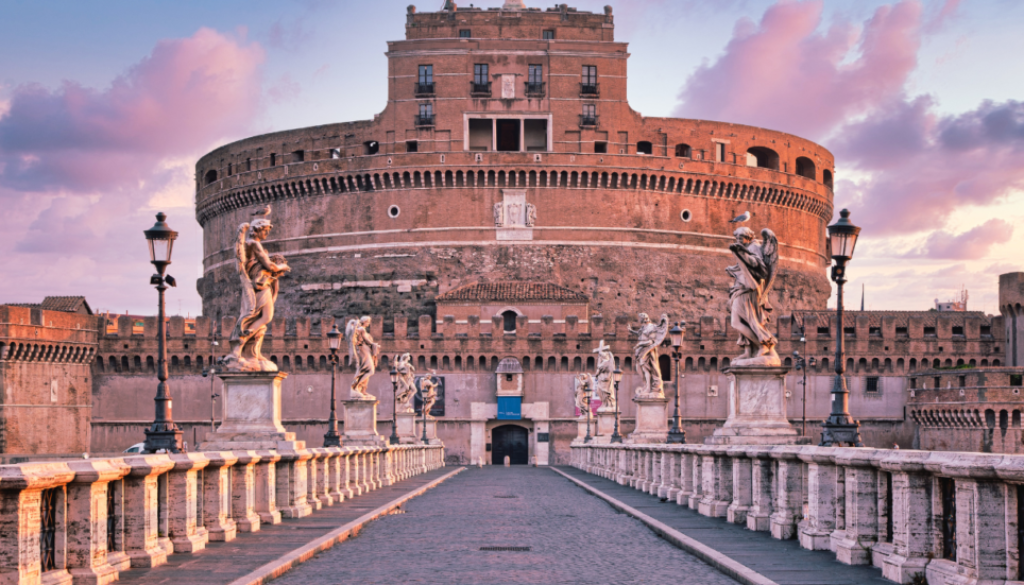Exploring Italy’s Architectural Gems: Top 10 Most Beautiful Castles to Visit
Italy, a land synonymous with art, culture, and history, is also home to some of the most enchanting castles in the world. Castles conjure images of knights, epic battles, and historic tales — but Italian castles offer something more. They are a testament to Italy’s diverse and rich architectural heritage, a link to a past adorned with opulence and intrigue. If you’re an architecture aficionado or simply captivated by grand historical structures, join us in a tour of ten Italian castles that are bound to mesmerize. Castles have long been a staple in Italy’s architectural and historical frameworks. Stemming from early medieval fortifications necessitated by a tumultuous past, these stone giants rose to safeguard cities, control passages, and assert power over the landscape. Gradually, with the Renaissance, castles evolved from mere defensive outposts into resplendent abodes reflective of the wealth and fine taste of their inhabitants. The strategic positioning of these castles was crucial, often perched atop hills or cliffs, with thick stone walls and imposing watchtowers. Such castles spoke to an era of constant threats and a need for security that defined Italy for centuries. The Renaissance presented a shift — and an opportunity for artistic and architectural indulgence. Castles like the Palazzo Ducale saw the fusion of defense with design, where fortified walls also supported the artistry of Michelangelo and da Vinci’s contemporaries. Here’s our selection of the most alluring Italian castles, each with its own unique story, architectural highlights, and reasons why they are not to be missed. Situated in the heart of Tuscany, Castello di Sammezzano is a kaleidoscope of colors rich in Moorish architectural influence. With over 365 rooms, each one distinct from the next, this castle is an unparalleled marvel of eclecticism. Architectural Highlight: The Peacock Room, a mosaic masterpiece. Historical Tidbit: Built during the Arabic-Norman domination, it was later transformed into a noble residence within Italy’s unification period, fusing Moorish design with Italian heritage. Originally built as a mausoleum for the Roman Emperor Hadrian, Castel Sant’Angelo has seen many manifestations, today serving as a museum. This cylindrical fortress holds within its walls secrets that entwine the history of Rome and the Vatican. Architectural Highlight: The celebrated Passetto di Borgo, a fortified corridor linking it to Vatican City. Historical Tidbit: The castle was used as a papal fortress and later a prison — offering a unique lens into the shifting roles that castles played across different ages. Castel Del Monte is a UNESCO World Heritage site and an architectural enigma, its octagonal layout intriguing scholars to this day. Built in the 13th century, the castle is a puzzle of purpose, its location and design continuing to fuel historical debate. Architectural Highlight: The harmonious fusion of Western European, Byzantine, and Islamic architecture. Historical Tidbit: The concept behind its unique design and purpose remains a mystery, with theories ranging from a hunting lodge to a symbolic piece of the Emperor’s power and intellect. Nestled in the Lucanian Dolomites, the village of Castelmezzano boasts a castle that’s as much a part of its craggy landscape as the rocks it’s built upon. This ‘village in the sky’ conjures a sense of isolation and wonder, its architecture melding with the natural beauty that surrounds it. Architectural Highlight: The castle’s strategic position, offering panoramic views of the valley below. Historical Tidbit: The village and castle served as an important stronghold during the Norman conquest of Southern Italy, adding layers of historical significance to its serene presence today. Set against the dramatic backdrop of the Alps, Castel Savoia stirs the imagination with its fairytale-like charm. Originally a hunting lodge, the castle transports visitors to a time of royal respite in the mountainous Piedmont region. Architectural Highlight: The Art Nouveau influence in the interiors, exemplifying the opulence of the period. Historical Tidbit: The castle played a pivotal role in the unification of Italy, as it was the summer residence of the first King of Italy, Vittorio Emanuele II. Sitting regally over the Parma River, the Castle of Torrechiara is famed for its romantic murals and for being one of the most well-preserved castles of its era. The blend of castle and palatial design makes Torrechiara a standout architectural gem. Architectural Highlight: The stunning Sala delle Dame with its intricate frescoes. Historical Tidbit: Commissioned by Pier Maria II de’ Rossi for his lover, Bianca Pellegrini, the castle’s design and adorned walls serve as a testament to their love story. A symbol of medieval power and the Aosta Valley’s economic prominence, Fénis Castle’s imposing structure belies the intricate beauty found within. With its array of towers and crenellations, the castle offers a comprehensive view of medieval castle life. Architectural Highlight: The grand courtyard and its surrounding towers that represent the flourishing of the Seigneury of the Challant family. Historical Tidbit: The castle was both a strategic and economic center, controlling the roads between France and Italy — a role reflected in its formidable silhouette. With roots in the Middle Ages, Castello di Rivoli underwent transformations that saw it become a grand Baroque residence, and later, a museum of contemporary art. The castle’s legacy intertwines with the history of the Savoy family and the artists it inspired. Architectural Highlight: The Baroque magnificence of the interiors, designed by Filippo Juvarra. Historical Tidbit: It was an important military outpost and later a key center for artistic and cultural exchange during the reign of the Savoys. A relatively recent addition to Tuscany’s tapestry, Castello di Amorosa is evocative of medieval times, thanks to its meticulous 12-year construction aimed at authenticity. The castle and its carefully curated medieval artifacts offer a window into that bygone era. Architectural Highlight: The Great Hall, a monumental space for feasting and merriment. Historical Tidbit: Despite its recent construction, the castle is a labor of love, each stone laid with precision to honor the Tuscan landscape and traditions. Perched on the cliffs of the Ionian coast, the Castle of Gallico possesses a poignant beauty amid the rugged Calabrian terrain. The castle’s ruinous state only adds to its mystique, evoking a somber grandeur reminiscent of its storied past. Architectural Highlight: The breathtaking view from the highest point, looking out over the azure sea. Historical Tidbit: The castle changed hands numerous times, witnessing battles between the Byzantines and the Saracens, testifying to the shifting geopolitical dynamics of the region. Visiting these castles isn’t just about observing history from afar; it’s about immersing yourself in the grandeur of another time. Here’s how you can make the most of your castle tours. Many Italian castles offer enriching guided tours, shedding light on the architecture, the historical context, and the fascinating anecdotes that make each castle unique. Look out for Italy’s National Heritage Days when entrances are often free, providing an excellent opportunity to explore. Enter the world of chivalry with thematic experiences that bring the castle’s past to life. From medieval reenactments to period-themed feasts, these events offer a pulse of what life within the castle walls might have been like. Some castles allow overnight stays, a rare chance to experience the serenity and splendor of a castle without the crowds. Special visits to private quarters or restricted areas can also be organized, providing a more intimate encounter with the castle’s hidden treasures. In modern Italy, these castles have found new life as museums, event venues, and even luxury accommodations. They continue to be stages for cultural and educational programs, reflecting their enduring relevance in a contemporary context. An increasing number of castles have been repurposed as museums, housing collections of art, history, and archeology that offer a deeper understanding of the region and heritage. Cultural events, from art exhibitions to music festivals, are often held within these historical walls, infusing them with contemporary vitality. The grandiosity and timelessness of Italian castles make them perfect for special occasions. They often serve as glamorous backdrops for weddings, concerts, and international film productions, further adding to their allure as beacons of cultural appreciation. A renewed push for sustainable tourism is influencing the preservation and restoration of these ancient structures, ensuring that they will continue to captivate future generations. The delicate balance between opening these monuments to the public and conserving their integrity is crucial, and the careful curation of visitor experiences reflects this commitment. Italian castles are not just relics of bygone eras; they are vibrant testaments to the enduring spirit of Italy’s architectural and historical legacy. Exploring these castles is akin to stepping into a living museum, each step unraveling a new tale, a new facet of the Italian past that has shaped its present. We invite you to witness the grandeur, to lose yourself in the labyrinthine corridors, and to stand in awe of the architectural prowess that has stood the test of centuries. For those who have yet to visit, begin planning your architectural odyssey, and for those who have had the pleasure, share your favorite castle with us and inspire others to discover the splendor of Italian castles. Whether it’s the Moorish influences of Tuscany’s Castello di Sammezzano or the symbolic marvel that is Castel Del Monte, there’s a castle for every heart, and endless wonders waiting to be explored. Start your Italian castle adventure today and unlock the secrets of the past, beautifully cast in stone for eternity.A Glimpse into History: The Role of Italian Castles
Early Medieval Strongholds
Renaissance Castles
Top 10 Most Beautiful Castles in Italy
1. Castello di Sammezzano, Tuscany
2. Castel Sant’Angelo, Rome
3. Castel Del Monte, Apulia
4. Castelmezzano, Basilicata
5. Castel Savoia, Piedmont
6. Castle of Torrechiara, Parma
7. Fénis Castle, Aosta Valley
8. Castello di Rivoli, Piedmont
9. Castello di Amorosa, Tuscany
10. Castle of Gallico, Calabria
Castle Tours and Experiences for Architecture Lovers
Guided Tours and National Heritage Days
Thematic Experiences and Events
Overnight Stays and Special Visits
The Modern Role of Italian Castles
Museums and Cultural Centers
Event Venues and Film Locations
Sustainable Tourism and Preservation Efforts



